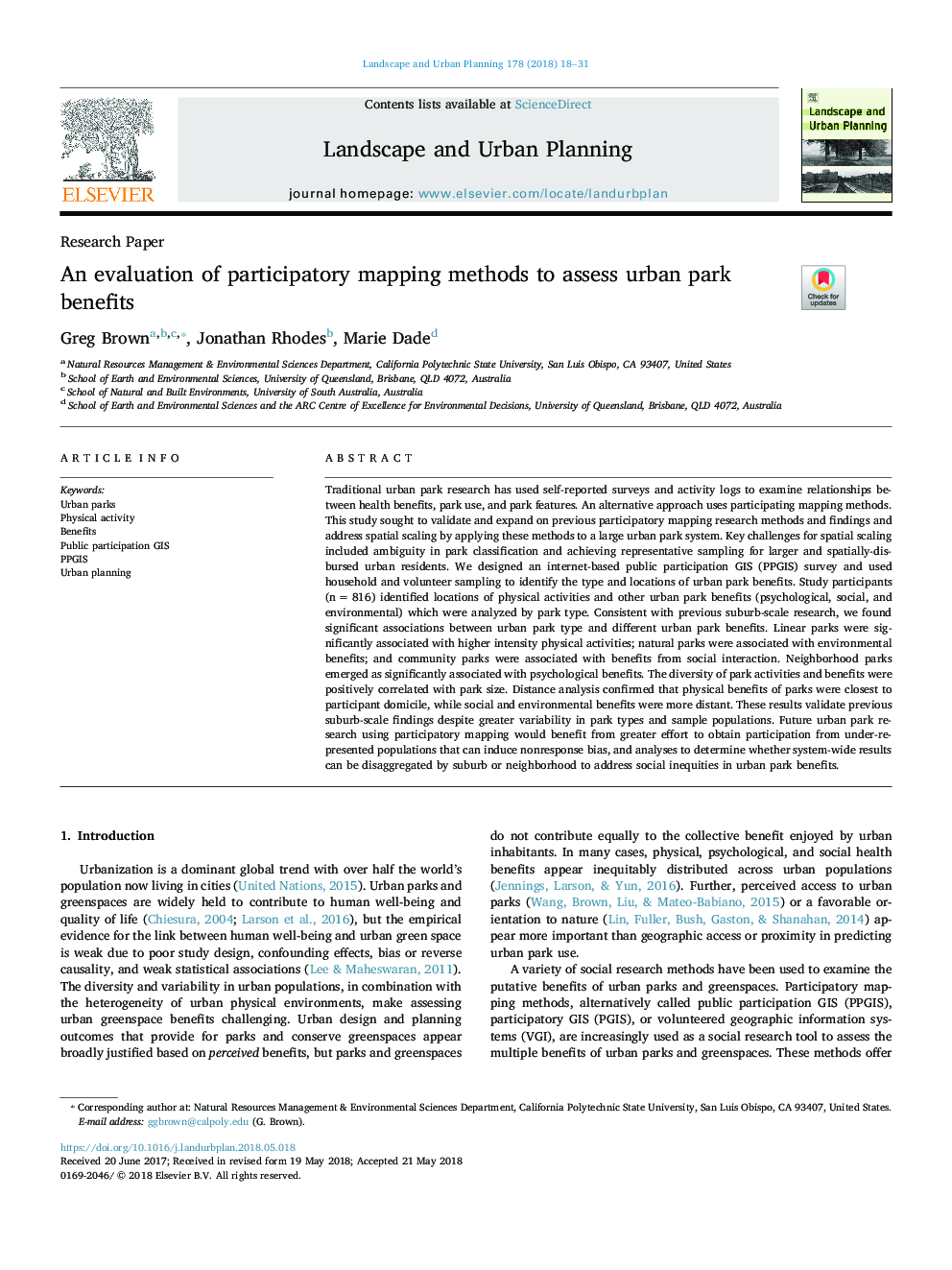| کد مقاله | کد نشریه | سال انتشار | مقاله انگلیسی | نسخه تمام متن |
|---|---|---|---|---|
| 7459476 | 1484580 | 2018 | 14 صفحه PDF | دانلود رایگان |
عنوان انگلیسی مقاله ISI
An evaluation of participatory mapping methods to assess urban park benefits
ترجمه فارسی عنوان
ارزیابی روش های نقشه برداری مشارکتی برای ارزیابی مزایای پارک های شهری
دانلود مقاله + سفارش ترجمه
دانلود مقاله ISI انگلیسی
رایگان برای ایرانیان
کلمات کلیدی
موضوعات مرتبط
علوم زیستی و بیوفناوری
علوم کشاورزی و بیولوژیک
بوم شناسی، تکامل، رفتار و سامانه شناسی
چکیده انگلیسی
Traditional urban park research has used self-reported surveys and activity logs to examine relationships between health benefits, park use, and park features. An alternative approach uses participating mapping methods. This study sought to validate and expand on previous participatory mapping research methods and findings and address spatial scaling by applying these methods to a large urban park system. Key challenges for spatial scaling included ambiguity in park classification and achieving representative sampling for larger and spatially-disbursed urban residents. We designed an internet-based public participation GIS (PPGIS) survey and used household and volunteer sampling to identify the type and locations of urban park benefits. Study participants (nâ¯=â¯816) identified locations of physical activities and other urban park benefits (psychological, social, and environmental) which were analyzed by park type. Consistent with previous suburb-scale research, we found significant associations between urban park type and different urban park benefits. Linear parks were significantly associated with higher intensity physical activities; natural parks were associated with environmental benefits; and community parks were associated with benefits from social interaction. Neighborhood parks emerged as significantly associated with psychological benefits. The diversity of park activities and benefits were positively correlated with park size. Distance analysis confirmed that physical benefits of parks were closest to participant domicile, while social and environmental benefits were more distant. These results validate previous suburb-scale findings despite greater variability in park types and sample populations. Future urban park research using participatory mapping would benefit from greater effort to obtain participation from under-represented populations that can induce nonresponse bias, and analyses to determine whether system-wide results can be disaggregated by suburb or neighborhood to address social inequities in urban park benefits.
ناشر
Database: Elsevier - ScienceDirect (ساینس دایرکت)
Journal: Landscape and Urban Planning - Volume 178, October 2018, Pages 18-31
Journal: Landscape and Urban Planning - Volume 178, October 2018, Pages 18-31
نویسندگان
Greg Brown, Jonathan Rhodes, Marie Dade,
